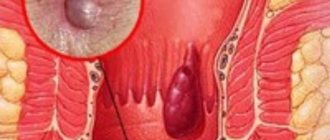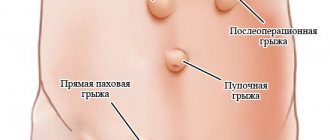What it is?
Hepatosis is a chronic process that is accompanied by obesity of hepatocytes and excessive accumulation of lipids in them. A change in the structure of cells leads to their damage and changes in the intercellular substance, which further provokes inflammatory-necrotic changes. Chronic course and hidden symptoms cause untimely treatment and the appearance of changes in the body that are very difficult to eliminate.
The long course of the pathology leads to the inability of the organ to perform its functions. One of the varieties of living hepatosis is alcoholic hepatosis, which appears in people who abuse alcohol. The pathogenesis of the disease remains the same - fat cells accumulate in hepatocytes, which change the structure and performance of the organ.
If the degeneration of the liver is not caused by alcohol, the pathology can be observed in a certain area of the organ, while, in general, the process is benign and does not threaten the patient’s life. Under the influence of unfavorable factors or excessive alcohol consumption, the pathology begins to progress, which leads to a life-threatening chain: fibrosis-cirrhosis-the need for organ transplantation or death.
Classification
Fatty liver hepatosis is an extremely dangerous disease in which fatty deposits appear on the surface of this organ.
Studies have shown that those at greatest risk are patients who are overweight and have diabetes. Also, the likelihood of hepatosis increases in people over 50 years of age. Modern experts divide fatty hepatosis into 2 types:
- Alcoholic fatty liver disease is usually caused by drinking large doses of alcoholic beverages. Indicates the initial process of liver cirrhosis. The surface of the liver becomes covered with lipid deposits, causing its functionality to be impaired. If the patient can give up persistent addiction, then the functioning of the organ is restored after 8 weeks.
- Non-alcoholic fatty liver is a condition in which hepatosis is not associated with the consumption of alcoholic beverages. Despite this, the pathology can still lead to liver cirrhosis. The tissues are covered with numerous scars, which causes symptoms of pathology. Hepatosis can be triggered by high cholesterol levels, excess body weight, diabetes mellitus and many other diseases of the endocrine system.
Forms and stages
In most cases, patients are diagnosed with a form of non-alcoholic fatty liver disease. This diagnosis has many synonyms - fatty degeneration, steatohepatitis, steatosis and others. Pathological changes begin when fat accumulation exceeds 10% of the weight of the cookies. There are 4 degrees of pathology:
- Zero. There are no clinical symptoms, small particles of fat are present in single liver cells.
- First. The size of fat deposits increases, their number now resembles individual lesions.
- Second. Fat deposits contain about half of the hepatocytes, intracellular obesity is diagnosed.
- Third. The accumulated fat continues to be deposited in the intercellular space, forming fat formations and cysts.
Types of liver hepatosis
Depending on the moment of occurrence, 2 types of hepatosis can be distinguished:
- Acquired.
- Hereditary.
This is interesting: Steatohepatosis: what is it and how to treat it? Treatment and diet for steatohepatosis
Acquired types that arise throughout life can be divided into:
- toxic - the result of toxic effects on the liver of toxic substances;
- fatty hepatosis (steatosis) – excessive deposition of fat in the liver, accompanied by lipid degeneration of hepatocytes.
The cause of hereditary hepatic lesions is genetic disorders:
- Gilbert's syndrome;
- Rotor disease;
- Dubin-Johnson syndrome.
There are also types of fatty hepatosis depending on the area of organ damage:
- Disseminated focal - small volumes of lipids are concentrated in various areas of the liver. It is asymptomatic.
- Pronounced disseminated type - voluminous accumulations of fat in different parts of the gland. Symptoms appear.
- Zonal - lipid damage to various parts of the gland lobules.
- Diffuse type - lipids accumulate evenly over the entire area of the liver lobule.
Depending on the microscopic picture of steatohepatosis, the following are distinguished:
- Small-droplet type – there is no damage to the structure of hepatocytes.
- Large-droplet type - the structure of the liver cells is disrupted, necrosis is observed.
Symptoms
There are usually no specific signs of the disease, and the chronic course of the pathology explains the late diagnosis and complexity of treatment. The disease develops gradually and does not cause discomfort to the patient for many years. At the first and second stages, reversible changes occur and therapy can lead to a positive result. At the third and fourth stages, obesity occurs with degeneration of the lobular structure of the organ, which is considered a state of pre-cirrhosis.
At the first stage, the patient has no symptoms or complaints. Later, non-specific signs of the disease begin to appear:
- pain
- nausea
- weakness
- poor appetite
- discomfort under the ribs on the right side
Closer to the third stage it can be focal or diffuse. The latter condition is accompanied by a more vivid clinical picture and objective disorders that can be diagnosed by instrumental and laboratory methods. With steatosis the following is observed:
- liver dystrophy
- accumulation of fat deposits
- delayed elimination of toxins
- insulin resistance
- blood supply disturbance
- increase in free radicals
- cell destruction
- disruption of apoprotein formation
Improper metabolic processes in the liver disrupt the functions of other organs. Pain occurs when the liver capsule is stretched due to an increase in its size. Clinical manifestations are not related to the timing of food intake. Pain is detected by the doctor by palpation of the abdomen.
The general appearance of the patient resembles an asthenic physique and is complemented by complaints of weakness, drowsiness and impaired performance. The reason for the appearance of such symptoms is a violation of the most important biochemical processes, which now do not lead to the production of sufficient energy.
Nausea occurs as a result of impaired bile formation and slower elimination of toxins. In the later stages, all biochemical processes that are associated with liver function are affected. The level of bilirubin and bile acids increases, which now enter the blood and are distributed throughout the body.
This is how additional symptoms of the later stages of hepatosis arise - jaundice, which is accompanied by itching, vomiting, and deterioration in general health. The tests diagnose hyperbilirubinemia and changes in the concentration of liver enzymes.
In addition to jaundice and itching, a rash or hemorrhages on the skin may occur. The basis for the appearance of such symptoms is a deterioration in the elimination of toxins. The lack of treatment, as well as the prolonged effect of damaging factors, leads to the fact that steatosis gradually turns into fibrosis - liver cells are replaced by connective tissue that does not have the ability to perform the work of hepatocytes. After fibrosis, cirrhosis develops.
Choose a specialist, read reviews and make an appointment with a gastroenterologist online
Folk remedies
You can only get rid of fatty liver disease at home if you have the initial stage of the degenerative process. For such therapy to be effective, you need to completely reconsider your lifestyle.
You should completely avoid harmful foods, alcoholic beverages and other harmful substances. Try to completely abandon all bad habits that can negatively affect the functioning of the entire body.
The most popular drugs against fatty hepatosis are:
- Artichoke is a small vegetable that has a positive effect on intestinal function. Try to consume this remedy daily in the form of meals, which will improve the condition of the liver tissue. Artichoke is low in calories and is an excellent diuretic. With regular use, you will be able to normalize your cholesterol and glucose levels;
- Loquat is a fruit that has multiple positive effects on orgasm. It contains a huge amount of useful substances that restore the liver and cleanse it of accumulated waste and toxins. In addition, you can replace desserts with this fruit;
- Radish and beets are vegetables that should definitely be included in the diet of a person who suffers from fatty liver hepatosis. With their help, it is possible to quickly get rid of the inflammatory process and cleanse the liver of waste and toxins. Radishes and beets are low in calories and are not capable of causing serious harm to the body;
- Milk thistle is a popular herb that forms the basis of many liver medicines. It can be used to prepare infusions and decoctions, with which you can get rid of the inflammatory process in the liver;
- Dandelions are flowers that have a positive effect on the body. With their help, it is possible to quickly cleanse the blood of waste and toxins and restore liver function. It is best to prepare decoctions and infusions from dandelion;
- Boldo is a plant that can quickly remove waste and toxins from the body. In addition, it allows you to remove excess fat from the liver tissue, which significantly speeds up its recovery. You can make teas and decoctions from it;
- Lemon is a simple citrus that has a positive effect on the functioning of the entire body. With its help, it is possible to cope with increased sensitivity, as well as get rid of heartburn. To get the most positive effect on the body, you should add lemon juice to your tea;
- Ginger is a root that has a huge number of positive qualities. It is able to quickly break down lipids into many useful elements, thereby restoring the functioning of the liver tissue. Add ginger to your tea and all your dishes;
- Chicory is a root that contains many beneficial substances. If you have fatty hepatosis, then the powder from this product should be replaced with coffee. With the help of chicory you will speed up metabolic processes and prevent stagnant effects.
Causes
Among the causes of fatty hepatosis, you should know the provoking factors that increase the likelihood of developing the disease, and the causes themselves. The first group includes:
- Overweight. In obese people, the liver has an increased load, so the organ is constantly in a state of increased performance. Over time, its cells wear out, the accumulation of glycogen in the liver is disrupted and the deposition of lipid cells increases.
- Alcohol abuse. Frequent consumption of alcoholic beverages leads to the destruction of hepatocytes, their insufficient regeneration and disruption of the functioning of the organ as a whole. Alcoholism also changes metabolic processes in other organs and impairs the detoxification and enzymatic function of the liver.
- Poor nutrition. Liver health is highly dependent on the quality of your diet. People who love fresh baked goods, as well as vegetarians who do not get enough protein, are at risk. Fresh baked goods are considered heavy food for the pancreas, liver and other gastrointestinal organs. Despite its amazing taste and smell, doctors of various specializations do not recommend using it. Vegetarianism is welcomed by doctors only if you follow the correct diet, which will ensure a balanced diet and the supply of all necessary substances to the body. If there is not enough protein, such a diet will weaken the entire body and disrupt the functioning of many internal organs.
- Physical inactivity. Insufficient physical activity contributes to the accumulation of excess body weight, which will negatively affect the condition of internal organs, in particular the liver.
The main causes of hepatosis are the following:
- Insulin resistance. When tissue sensitivity to insulin decreases, hyperglycemia occurs and a compensatory mechanism develops, which leads to increased insulin production. Large amounts of insulin enhance lipolysis, which releases large amounts of fatty acids and increases the accumulation of triglycerides in the liver. The balance of production and utilization of fat cells is disrupted, which leads to the accumulation of very low-density lipoproteins. Later, inflammation occurs, the death of hepatocytes and their degeneration into connective tissue.
- Dysbacteriosis. Excessive activity of pathogenic microflora in the intestine leads to bacteria entering the portal vein and liver. This contributes to the development of the inflammatory process, activation of the immune response and subsequent production of fibrous tissue.
- Disturbance of metabolic processes. Improper metabolism is accompanied by hyperlipidemia. This is usually observed with endocrine disruptions (diabetes and hormonal disorders).
One of the leading factors in increasing the likelihood of developing steatosis is given to excess body weight. Adult patients should consciously take care of their health, and also prevent obesity in their children. Thus, fatty hepatosis can act as an independent disease, develop as a complication of endocrine or metabolic disorders, and also be a consequence of the effects of intoxication and other unfavorable factors.
Obesity
Obesity is a pathological condition in which there is an increase in body weight and the deposition of excess fat in the body. It occurs as a result of overeating, the predominance of refined foods, simple carbohydrates in the diet, a sedentary lifestyle, hereditary predisposition, and pathologies of the nervous system. It occurs in people who take antidepressants and hormonal drugs.
The disease manifests itself as:
- weight gain
- shortness of breath
- disability
- difficulty defecating
- increased blood pressure
- pain in the heart and joints
- decreased libido
- psychological disorders: decreased self-esteem
During an external diagnosis of an obese patient, the doctor reveals that the liver is slightly enlarged in size. The higher the body weight, the less likely it is that other symptoms will occur. To make an accurate diagnosis, body mass index is calculated, densitometry is performed, the amount of muscle tissue and adipose tissue is measured, as well as the nature of its distribution.
Metabolic diseases
Metabolic disorders are a set of manifestations that indicate that the process aimed at the synthesis of energy in the body is disrupted. The dysfunction is caused by a deficiency of important micronutrients: selenium, zinc, manganese, chromium, fat-soluble vitamins: A, D, E. The trigger for the development of metabolic disorders can be iron deficiency anemia, insufficient intake of folic acid, vitamin B 12.
When carbohydrate metabolism is disturbed, diabetes mellitus develops; fat metabolism leads to the accumulation of cholesterol, which provokes dysfunction of the cardiovascular system. Excessive amounts of free radicals are fraught with neoplasms. Metabolic disorders lead to the development of:
- fatty liver disease
- weight gain
- destruction of tooth enamel
- changes in skin color
- deterioration of the condition of the skin and hair
Intestinal disorders are also possible, which manifest themselves in the form of dyspeptic disorders, constipation, and diarrhea.
Physical inactivity
Patients with physical inactivity are prone to rapid weight gain. Adipose tissue gradually replaces liver cells, and the patient develops hepatosis. Regular physical activity activates metabolic processes and the functioning of the lymphatic system. Oxygen saturation of cells is normalized, cleansing and regeneration processes are restored. Patients with physical inactivity are advised to include daily moderate physical activity, review their diet, and take daily walks in the fresh air.
Lack of physical activity is fraught not only with impaired liver function, but also with dysfunction of the musculoskeletal system, muscle atrophy, and psycho-emotional disorders. Patients' bone mass decreases and the likelihood of developing osteoporosis increases. The functioning of the gastrointestinal tract and respiratory organs, the endocrine system is disrupted, and insulin levels decrease. The patient complains of a constant feeling of weakness, impaired memory, sleep, and ability to work. Physical inactivity is not officially recognized as a disease, but it significantly worsens the quality of life.
Binge eating
The main cause of fatty liver disease is metabolic and endocrine disorders caused by overeating. Eating excess food is fraught with disruption of carbohydrate and mineral metabolism, and an increase in low-density lipoproteins. “Bad” cholesterol accumulates in the walls of blood vessels, and adipose tissue gradually replaces hepatocytes.
The predominance of fatty foods, red meat, rich broths, simple carbohydrates, sugar, white flour, refined products, and low-quality oils in the diet causes diseases of the cardiovascular system, hepatosis, and endocrine disorders. The higher the body weight, the higher the risk of developing diabetes mellitus and vascular complications. People with a poor-quality unbalanced diet, eating disorders, and a hereditary predisposition to excess body weight are at risk.
Vegetarianism with impaired carbohydrate metabolism
Disorders of carbohydrate metabolism according to the excess type lead to weight fluctuations, changes in physical and emotional state, fluctuations in blood pressure, tremors in the body, sudden jumps in glucose, dry mouth, and constant thirst.
An insufficient type of carbohydrate metabolism, which is often observed in people with limited nutrition, can cause:
- constant weakness and drowsiness
- hand tremors
- shortness of breath
- headache, dizziness
- apathy
- progression of ketoacidosis, causing nausea and vomiting
- blood glucose drops, normal processes slow down
If there are disturbances in carbohydrate metabolism, the functioning of the liver is disrupted, and the likelihood of developing hepatosis increases. With dietary restrictions, it is important to monitor and promptly compensate for any deficiencies in vitamins, microelements, and amino acids. Contact a nutritionist or nutritionist to select a complete diet enriched with essential nutrients. Take vitamin and mineral complexes, vitamin D, omega-3 in courses. To cleanse the liver, use milk thistle and dandelion roots.
Diets for weight loss
An unbalanced diet when following diets for weight loss can provoke metabolic disorders and exacerbation of chronic pathologies. Insufficient supply of vital substances is fraught with impaired mineral metabolism, hyper- or hypoglycemia, Burke's disease, and liver dysfunction. People at risk include:
- hereditary predisposition to metabolic, endocrine, carbohydrate disorders;
- circulatory disorders
- tumors
- toxic damage to the liver and the body as a whole
- disorders of neurohormonal regulation
- exhausting physical activity
- regular psycho-emotional stress
If there is a history of impaired carbohydrate function of the liver, the condition and clinical picture are aggravated. Immediate provision of high-quality medical care, correction of diet, use of hepatoprotectors, and compliance with the drinking regime are required.
Long-term use of certain medications
The liver is the first to suffer from prolonged, uncontrolled use of drugs in high doses. A number of pharmacodynamic processes, breakdown and transformation of chemicals occur in the liver. Complications are caused by drugs that contain heavy metals (mercury, mice, aluminum) and antibacterial agents. Before starting to use the drug, it is recommended to read the instructions and pay attention to the list of possible contraindications, side effects, and age restrictions.
People with a history of liver disease should exercise special caution. The use of any drug must be reported to your hepatologist. Carefully study drug interactions of individual groups of drugs. Try not to use hepatotoxic substances. Otherwise, the risk of developing fatty hepatosis and irreversible conditions increases. To maintain the organ during therapy, they use Silymarin and milk thistle preparations.
Vitamin A overdose
More than 85% of the vitamin is deposited in liver cells in the form of an ester. Subsequently, the substance is transformed into the aldehyde form and retinoic acids. The substances are highly soluble in oil and insoluble in water. Excessive liver deposition and accumulation in tissues can have a toxic effect not only on the organ, but also on the body as a whole. Long-term overdose causes liver dysfunction, hair loss, headache, weakness, and increased fatigue. The clinical picture is aggravated in patients with fatty hepatosis.
Diseases of the internal secretion organs
Diseases of the internal secretion organs or endocrine disorders are one of the most common causes of fatty hepatosis. Hyperfunction or hypofunction of the glands leads to dysfunction of the thyroid gland and diabetes mellitus. All this provokes non-alcoholic fatty hepatosis in patients of all age groups. At high concentrations of T3 and T4 in free form, a disturbance in the synthesis of proteins caused by liver pathologies is observed. The organ produces thyroxine-binding globulin, which is responsible for binding T3 and T4.
Alcohol abuse
The liver is one of the target organs that suffers when consuming excess amounts of ethanol. Alcohol leads to damage and death of liver cells - hepatocytes. Redox processes are disrupted, and acetaldehydes—toxic breakdown products of alcohol—accumulate. The development of an inflammatory process is observed, followed by the replacement of liver cells with connective tissues. The organ increases in size, ceases to function properly, and hepatosis develops.
Digestive diseases
The liver is one of the organs that is involved in the digestion process. It triggers the exchange of vitamin complexes, lipid fractions, and carbohydrates. The liver synthesizes albumin, globulin and other blood proteins and takes part in the body's immunological reaction. All body systems are interconnected and dysfunction of the gastrointestinal tract can affect the condition of the liver and urinary system. Treatment involves a holistic approach and addressing the root cause of the disease. Symptomatic therapy drugs are used optionally.
Diabetes
Numerous studies have confirmed the connection between diabetes mellitus and various liver pathologies, including fatty hepatosis. Loss of insulin negatively affects the functional state of the liver. In patients with diabetes, the level of liver enzymes increases. This provokes ALT levels and aggravates the course of diabetes mellitus. Glucose production increases and triglyceride storage abnormalities occur. The liver is one of the insulin-sensitive organs, which may indicate the initial stages of diabetes even before the increase in glucose concentration in laboratory parameters.
Gallstones
With fatty hepatosis, gallstones are detected in more than 25% of patients. The disease affects the process of synthesis and promotion of bile. The formation of pigmented stones is most often caused by stagnation of bile in the liver and extrahepatic bile ducts. Stones begin to form in the intrahepatic bile duct in the form of protein bases, bile pigment and a small amount of lime salt.
Digestive enzyme deficiency
Pathologies of the liver (fatty hepatosis) and biliary system often lead to enzyme deficiency. This is due to the fact that pancreatic enzymes are not sufficiently activated by bile. Products that lack enzymes lead to excess stress on the body, and liver pathologies only aggravate this situation.
Inflammation of the pancreas
Pathologies of the pancreas are accompanied by inflammatory processes and are called “pancreatitis”. Acute and chronic course of the pathological process is observed. With exacerbation of pancreatitis, severe swelling and the formation of fat necrosis, colored white-yellow, are observed. In the absence of timely assistance, surrounding organs suffer, and the liver stops functioning properly. Hemorrhages, suppuration, and the formation of yellow cysts are possible. The lack of quality assistance is fraught with the development of irreversible processes.
Authorized Products
The diet for liver hepatosis includes inclusion in the diet:
- Vegetable broths and soups based on them with the addition of cereals, noodles, and vegetables.
- Low-fat varieties of red meat (beef/veal), rabbit, chicken, turkey. The meat must be pre-boiled followed by cooking.
- Day-old/dried wheat bread up to 500 g per day. If well tolerated - rye bread, low-fat cookies, dry biscuit.
- Low-fat types of sea/river fish, baked with vegetables.
- Cereals in the form of casseroles, porridge.
- Low-fat fermented milk products: yogurt, kefir, bifidum-kefir, acidophilus and low-fat cottage cheese.
- Milk/sour cream only as an additive to prepared dishes.
- Chicken eggs in the form of a steam omelet/soft-boiled.
- Fresh, baked and stewed vegetables in the form of salads with the addition of vegetable oil, mashed potatoes and homemade squash caviar. Spices include garden herbs, cumin, bay leaf.
- Sour cream, milk and vegetable sauces.
- Non-acidic fruits/berries in fresh and processed form (jelly, compotes, mousses).
- Marmalade, honey, caramel, marshmallows, jams, toffee. Sugar is partially replaced with xylitol.
- Butter/vegetable oil is added only to ready-made dishes; heat treatment is excluded.
- Still table water, rosehip infusion, weak tea, vegetable juices, wheat bran decoction, coffee with milk (not strong).
Table of permitted products
| Proteins, g | Fats, g | Carbohydrates, g | Calories, kcal | |
Vegetables and greens | ||||
| zucchini | 0,6 | 0,3 | 4,6 | 24 |
| broccoli | 3,0 | 0,4 | 5,2 | 28 |
| cauliflower | 2,5 | 0,3 | 5,4 | 30 |
| potato | 2,0 | 0,4 | 18,1 | 80 |
| carrot | 1,3 | 0,1 | 6,9 | 32 |
| pumpkin | 1,3 | 0,3 | 7,7 | 28 |
Fruits | ||||
| apricots | 0,9 | 0,1 | 10,8 | 41 |
| quince | 0,6 | 0,5 | 9,8 | 40 |
| watermelon | 0,6 | 0,1 | 5,8 | 25 |
| bananas | 1,5 | 0,2 | 21,8 | 95 |
| pears | 0,4 | 0,3 | 10,9 | 42 |
| melon | 0,6 | 0,3 | 7,4 | 33 |
| kiwi | 1,0 | 0,6 | 10,3 | 48 |
| peaches | 0,9 | 0,1 | 11,3 | 46 |
| plums | 0,8 | 0,3 | 9,6 | 42 |
| persimmon | 0,5 | 0,3 | 15,3 | 66 |
| apples | 0,4 | 0,4 | 9,8 | 47 |
Berries | ||||
| strawberry | 0,8 | 0,4 | 7,5 | 41 |
| blueberry | 1,1 | 0,4 | 7,6 | 44 |
Nuts and dried fruits | ||||
| raisin | 2,9 | 0,6 | 66,0 | 264 |
| dried figs | 3,1 | 0,8 | 57,9 | 257 |
| dried apricots | 5,2 | 0,3 | 51,0 | 215 |
| dried apricots | 5,0 | 0,4 | 50,6 | 213 |
| prunes | 2,3 | 0,7 | 57,5 | 231 |
Cereals and porridges | ||||
| buckwheat (kernel) | 12,6 | 3,3 | 62,1 | 313 |
| semolina | 10,3 | 1,0 | 73,3 | 328 |
| oat groats | 12,3 | 6,1 | 59,5 | 342 |
| pearl barley | 9,3 | 1,1 | 73,7 | 320 |
| rice | 6,7 | 0,7 | 78,9 | 344 |
Flour and pasta | ||||
| pasta | 10,4 | 1,1 | 69,7 | 337 |
| buckwheat noodles | 14,7 | 0,9 | 70,5 | 348 |
Bakery products | ||||
| wheat bread | 8,1 | 1,0 | 48,8 | 242 |
Confectionery | ||||
| jam | 0,3 | 0,2 | 63,0 | 263 |
| jelly | 2,7 | 0,0 | 17,9 | 79 |
| marshmallows | 0,8 | 0,0 | 78,5 | 304 |
| fruit and berry marmalade | 0,4 | 0,0 | 76,6 | 293 |
| paste | 0,5 | 0,0 | 80,8 | 310 |
Raw materials and seasonings | ||||
| honey | 0,8 | 0,0 | 81,5 | 329 |
| sugar | 0,0 | 0,0 | 99,7 | 398 |
Dairy | ||||
| kefir 1.5% | 3,3 | 1,5 | 3,6 | 41 |
| curdled milk 1% | 3,0 | 1,0 | 4,1 | 40 |
| acidophilus 1% | 3,0 | 1,0 | 4,0 | 40 |
Cheeses and cottage cheese | ||||
| cottage cheese 1% | 16,3 | 1,0 | 1,3 | 79 |
| cottage cheese 1.8% (low-fat) | 18,0 | 1,8 | 3,3 | 101 |
Meat products | ||||
| beef | 18,9 | 19,4 | 0,0 | 187 |
| rabbit | 21,0 | 8,0 | 0,0 | 156 |
Bird | ||||
| boiled chicken breast | 29,8 | 1,8 | 0,5 | 137 |
| boiled chicken drumstick | 27,0 | 5,6 | 0,0 | 158 |
| boiled turkey fillet | 25,0 | 1,0 | — | 130 |
Eggs | ||||
| chicken eggs | 12,7 | 10,9 | 0,7 | 157 |
Fish and seafood | ||||
| flounder | 16,5 | 1,8 | 0,0 | 83 |
| pollock | 15,9 | 0,9 | 0,0 | 72 |
| cod | 17,7 | 0,7 | — | 78 |
| hake | 16,6 | 2,2 | 0,0 | 86 |
Oils and fats | ||||
| butter | 0,5 | 82,5 | 0,8 | 748 |
| sunflower oil | 0,0 | 99,9 | 0,0 | 899 |
Non-alcoholic drinks | ||||
| water | 0,0 | 0,0 | 0,0 | — |
| mineral water | 0,0 | 0,0 | 0,0 | — |
Juices and compotes | ||||
| apricot juice | 0,9 | 0,1 | 9,0 | 38 |
| carrot juice | 1,1 | 0,1 | 6,4 | 28 |
| peach juice | 0,9 | 0,1 | 9,5 | 40 |
| pumpkin juice | 0,0 | 0,0 | 9,0 | 38 |
| rose hip juice | 0,1 | 0,0 | 17,6 | 70 |
| * data is per 100 g of product | ||||
Possible complications
Disruption of the structure of hepatocytes and hypofunction of the liver lead to quite serious complications that manifest themselves both in the hepatobiliary apparatus and in the body as a whole. The main adverse consequences include the following:
- development of the inflammatory process in the organs of the hepatobiliary apparatus. The patient is diagnosed with cholecystitis, pancreatitis, or the presence of stones in the ducts. The cause is often a deterioration in the quality of life, the accumulation of toxins and the activation of pathogenic flora. With a lack of gastric enzyme production, the load on the pancreas increases, which over time leads to pancreatitis.
- vascular problems. The accumulation of toxins and blockage of the bile ducts over time provoke an increase in blood pressure, deterioration of the structure of venous vessels and the development of varicose veins. If left untreated, such disorders negatively affect the functioning of the visual apparatus, the condition of the skin and the appearance of the patient.
- decreased immunity and defenses of the body, which increases the likelihood of frequent respiratory diseases and the risk of infection with parasites.
- irreversible liver changes - cirrhosis.
Diagnostics
The main place in the diagnosis of steatosis is occupied by laboratory tests, in particular, biochemical blood tests. It determines indicators that reflect the functioning of the organ (liver enzymes, bilirubin, bile acids). Elevated concentrations of glucose and cholesterol are also found in the blood.
Instrumental methods – ultrasound, computed tomography and magnetic tomography – help to complement the objective picture. They will clearly show the localization of changes in the structure of the liver and the expansion of its boundaries, however, inflammation in the images is not always noticeable.
Treatment
Treatment includes three areas:
- implementation of the treatment regimen prescribed by the doctor;
- maintaining the necessary diet;
- refusal of alcohol and other provoking factors.
Therapy is often carried out on an outpatient basis with the help of medications. The following groups of medications are prescribed:
- Hepatoprotectors. The main group of medications for steatosis. Their action is aimed at restoring the structure and functions of hepatocytes, reducing intoxication of the body, as well as reducing the inflammatory process. Doctors can prescribe hepatoprotectors on a plant or synthetic basis. The best remedies are considered to be preparations containing essential phospholipids - components of hepatocyte membranes that make cells stronger and increase resistance to adverse factors. Combined products, which additionally include glycyrrhizic acid, also have an anti-inflammatory effect and act as antioxidants.
- Choleretic drugs based on ursodeoxycholic acid. They reduce the synthesis of cholesterol and fatty deposits in the liver, stimulate the secretion of bile, improve the detoxification properties of the liver, and promote the dissolution of stones.
- Herbal hepatotropic agents. They have a complex effect that normalizes the functions of the organ - improves the discharge of bile, promotes tissue regeneration.
- Vitamins, antihypoxants, antioxidants are necessary to normalize biochemical processes and accelerate the regeneration of hepatocytes.
Diet
Diet is absolutely necessary for the effectiveness of basic conservative treatment. Basic nutritional recommendations are as follows:
- achieving and maintaining the patient's weight within normal limits
- replacing animal fats with vegetable ones
- avoidance of alcohol, dyes and preservatives
- eating enough vegetables, protein, vitamins
- preference should be given to cooking methods such as boiling and baking in the oven
- Fried and fatty foods are recommended to be completely avoided
- meals should be taken in small portions, but 6-7 times a day
- It is advisable to eat crushed or liquid foods at a warm temperature
Fatty cottage cheese, hot sauces, sour cream, smoked meats, fast food, offal, canned food, onions and garlic, all mushrooms, and fatty broths are considered harmful for steatosis. Lean types of fish, seasonal vegetables and fruits, low-fat lactic acid products, steamed meat products, and cereals will be beneficial for the liver. It is recommended to replace confectionery sweets and fresh baked goods with marmalade, dried fruits and honey.
Sample menu for the day
- Breakfast. Oatmeal, tea, banana.
- Snack. Low-fat cottage cheese, marmalade.
- Dinner. First course in vegetable broth with meatballs, buckwheat porridge, cod fillet.
- Afternoon snack. Rose hip decoction, biscuits, pear.
- Dinner. Vegetable juice, puree, baked fish.
- Late dinner. Low-fat yogurt, not sweet crackers.
Weekly diet
If you structure your diet correctly, your diet will become tasty and varied:
- Monday: vinaigrette seasoned with vegetable oil and 100 g of boiled or steamed beef for breakfast. Beef can be replaced with boiled chicken breast. Second breakfast – low-fat cheese. Lunch - okroshka with low-fat kefir, second course - boiled and grated beets with the addition of a minimal amount of salt. You can wash down your lunch with a rosehip-based decoction or weak tea. Dinner - vegetable cabbage rolls or boiled beef tongue. Green tea, without sugar. To make it sweeter, you can add honey.
- Tuesday: for breakfast - fresh cucumber and 100 g of boiled lean meat, weak coffee. Second breakfast - low-fat cottage cheese, serving size - no more than 200 g, a glass of compote. Lunch - vegetable soup without adding potatoes. The second dish is stewed cabbage, 100 g of boiled chicken without skin, compote or jelly. Dinner - boiled fish with boiled vegetables, fruit puree from non-acidic fruits. To wash down your dinner, you can prepare a rosehip-based decoction with honey.
- Wednesday: an omelet from one egg (milk with a minimum percentage of fat content is added to the omelet), a salad of permitted vegetables with vegetable oil dressing, weak coffee or tea, no added sugar. Second breakfast - low-fat cottage cheese. Lunch - beetroot soup, for the main course - baked fish with vegetables, a glass of tomato juice diluted with water. Dinner – steamed chicken with vegetables, compote.
- Thursday: it is recommended to make this day of the week a fasting day for the liver. On Thursday it is better to refrain from eating any food. You can use low-fat kefir and water. You need to drink at least 1.5–2 liters of water. Having 1 fasting day a week will help take the load off the liver, which will speed up the process of its recovery. This measure will be especially useful for those people who have a concomitant diagnosis of hepatitis.
- Friday: oatmeal with water, 1 boiled egg, cocoa for breakfast. Second breakfast - a slice of yesterday's or rye bread, a glass of low-fat kefir or yogurt. Lunch - lean borscht, as a second course - steamed chicken cutlets with boiled beets, as a sweet - green apples baked with honey and low-fat cottage cheese, a glass of water or compote. Dinner - zucchini caviar, 100 g of boiled beef, herbal decoction. Just before bed, you can drink a glass of low-fat kefir.
- Saturday: Breakfast may consist of beet puree and boiled tongue. You can drink weak coffee diluted with low-fat milk. Second breakfast - low-fat cottage cheese or baked fruit. Lunch - vegetable puree soup, boiled chicken with baked vegetables, compote. Dinner - steamed fish, vegetable salad, slice of cheese, compote or jelly.
- Sunday: vegetable salad with vegetable oil, boiled meat without side dish. Second breakfast - a slice of low-fat cheese. Lunch - vegetable soup, cabbage rolls with porridge, for dessert - yogurt or cottage cheese with fruit, a glass of weak tea without sugar. Dinner - fish with vegetables, dried fruit compote. Before going to bed, you can drink a glass of kefir, yogurt or yogurt.
During the day it is necessary to maintain the correct drinking regime. If a person has problems with excess weight in addition to fatty liver, it is recommended to drink a glass of plain water half an hour before the main meal. This measure will help you feel full faster and, accordingly, eat less.
Prevention
The disease can be prevented through a healthy lifestyle, a balanced and healthy diet, and optimal physical activity. A person should be active every day; walking and swimming are very useful. Despite the abundance of fast food and store-bought treats, it is recommended to completely exclude them from your diet and give preference to natural vegetables and fruits, lean meat and cereals.
It is very important to maintain your weight within normal limits, since obesity sharply increases the likelihood of not only liver diseases, but also others. Drinking alcoholic beverages in any quantity destroys hepatocytes. Endocrine and hormonal disorders are also considered dangerous. To timely identify the initial stages of steatosis, it is recommended to undergo preventive examinations and take a blood test at least once a year.
Fatty hepatosis is a dangerous condition that begins unnoticed and does not manifest itself for a long time. Lack of therapy increases the risk of irreversible changes and death. It is quite easy to prevent pathology, but this requires reconsidering your lifestyle and diet.
Fatty hepatosis during pregnancy
This disease often occurs in pregnant women. Hormonal imbalances and eating large amounts of food are to blame. Acute fatty hepatosis of pregnancy (AFPH) is more often diagnosed, which can harm the expectant mother, including death during childbirth. Signs of the disease are most often observed after 30 weeks and may be accompanied by jaundice. A woman may feel weak, lethargic, nauseous, and vomiting is common. Pain periodically appears in the liver area, and a pregnant woman suffers from heartburn. If such symptoms appear by the 30th week of gestation, you should consult a doctor.











